I’m a big fan of color especially a rainbow of color. My home is full of rainbow crafts and DIYs. I thought it would be fun to add to the decor with some vintage color wheel posters and vintage color charts.
I even display many of the colorful vintage flowers and vintage bird prints from Picture Box Blue in a rainbow gallery wall.
Color wheels and rainbows are very closely interlinked. Isaac Newton invented the color wheel in 1666.
Newton was playing around with white light and making rainbow patterns using prisms. That was when he discovered that white light was composed of a rainbow of color: red, orange, yellow, green, blue, indigo, violet.
Newton also noticed that red and violet were similar (both contain red). So he twisted the band of color around to form a circle. This was the original vintage color wheel. This helped explain a lot of the mathematical relationships between colors.

Color Circles
A color wheel is also known as a color circle. Basically it is an abstract illustrative organization of color hues around a circle. Showing the relationships between primary colors, secondary colors and tertiary colors.
The primary colors are red, yellow, and blue. The secondary colors are green, orange, and purple. And the tertiary colors are yellow-orange, red-orange, red-purple, blue-purple, blue-green, and yellow-green. These are the 12 colors that typically appear on a color wheel.
Artists and designers use color wheels regularly as a tool to mix, determine, and pick colors confidently.
You can use the color wheel to develop color schemes. Color schemes are harmonious combinations of colors on the color wheel.
According to color theory, these combinations include any two colors opposite each other on the color wheel, any three colors equally spaced around the color wheel forming a triangle, or any four colors forming a rectangle (actually, two pairs of colors opposite each other).
The Free Vintage Color Wheel Posters To Download
1. Hiler Color System
Hilaire Hiler was an artist and psychologist who combined his artistic and psychoanalytical training to formulate an original perspective on color.
Hiler’s color wheel differs from that of Newton as it is based on ten color groups: yellow, orange, orange-red, red, purple, blue, turquoise, sea green, green, and leaf green. Each group contains three variations, yielding the 30-step wheel.
His wheel is unique as it is not based on mathematical relationships of color but the psychological ones.
With the Hiler color system groups of colors are associated with different psychological states. For example, he attributes yellow to happy and gay. Whereas green is associated with passive and sad psychological states.
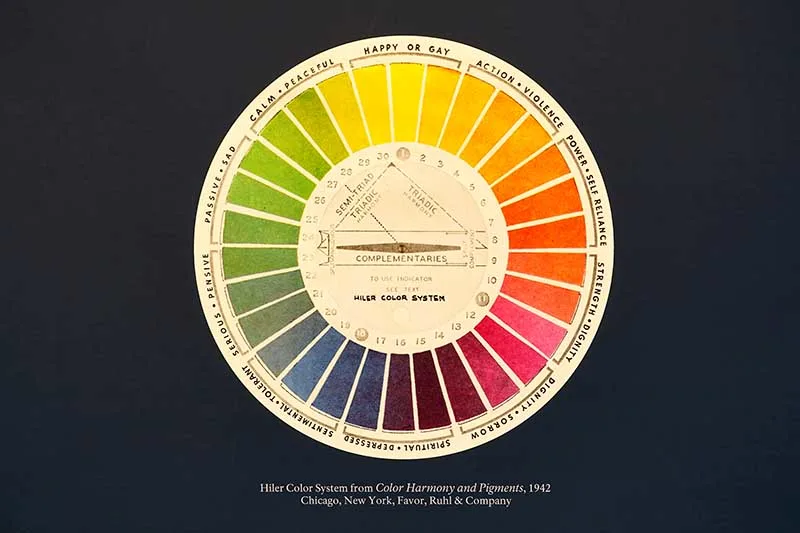
2. A class-book of color
This vintage color wheel is from the 1895 book ” A class-book of color: including color definitions, color scaling, and the harmony of colors” by Mark Maycock.
Mark’s color wheel is composed of 18 spokes made up of the seven colors of the rainbow and their hues.
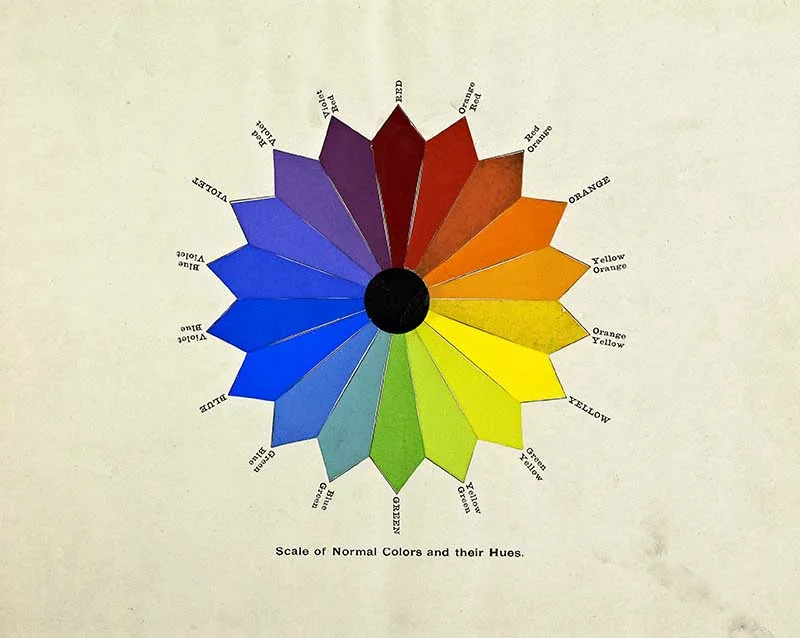
3. Goethe’s Vintage Color Wheel
This color wheel is from the German poet Johann Wolfgang von Goethe’s book “The Theory of Colors” 1810.
Goethe also established a kind of color psychology. He associated red with the “beautiful”, orange with the “noble”, yellow to the “good”, green to the “useful”, blue to the “common”, and violet to the “unnecessary”.
“These six qualities were assigned to four categories of human cognition, the rational (Vernunft) to the beautiful and the noble (red and orange), the intellectual (Verstand) to the good and the useful (yellow and green), the sensual (Sinnlichkeit) to the useful and the common (green and blue) and, closing the circle, imagination (Phantasie) to both the unnecessary and the beautiful (purple and red)“.
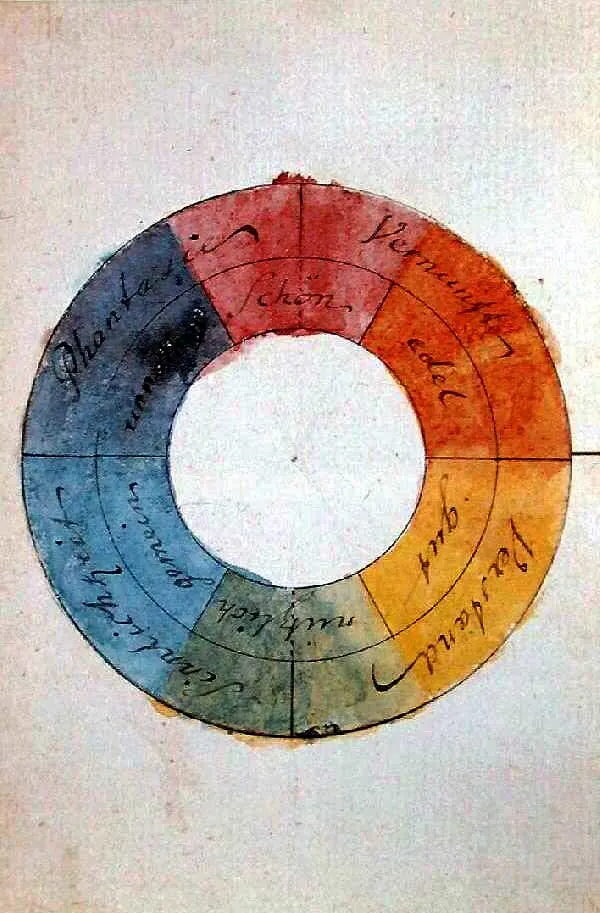
4. The Principles Of Light and Color
The color circle is from the book “The principles of light and color: including among other things the harmonic laws of the universe, the etheric-atomic philosophy of force, chromo chemistry, chromo therapeutics, and the general philosophy of the fine forces, together with numerous discoveries and practical applications ” by Edwin Babbitt (1878).
Edwin Babbit had two purposes for publishing his book. The first was to convince his fellow doctors in the medical profession that he had discovered a valuable therapeutic system. The second was to present to the world a philosophy of ‘light and color’ that he believed described the basis of all life.
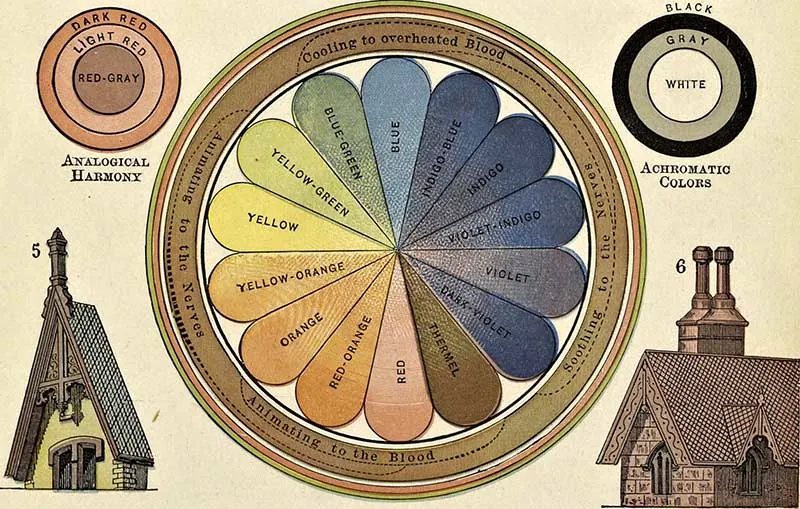
5. Bezold’s Color Wheel
A vintage color wheel by the German physicist Johann Friedrich Wilhelm von Bezold.
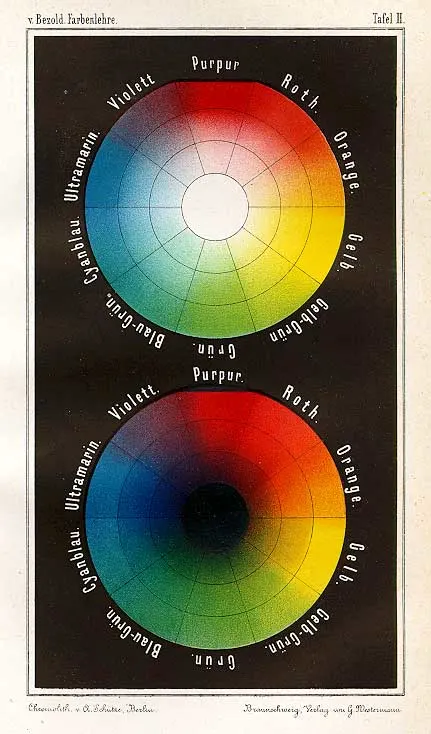
6. Ignaz Schiffermüller Color Circle
A 1772 color circle by the Austrian naturalist Ignaz Schiffermuller from his publication ” Versuch eines Farbensystems” (Trying a color system).
A color circle, hand-tinted with twelve colors continuously shading into one another.
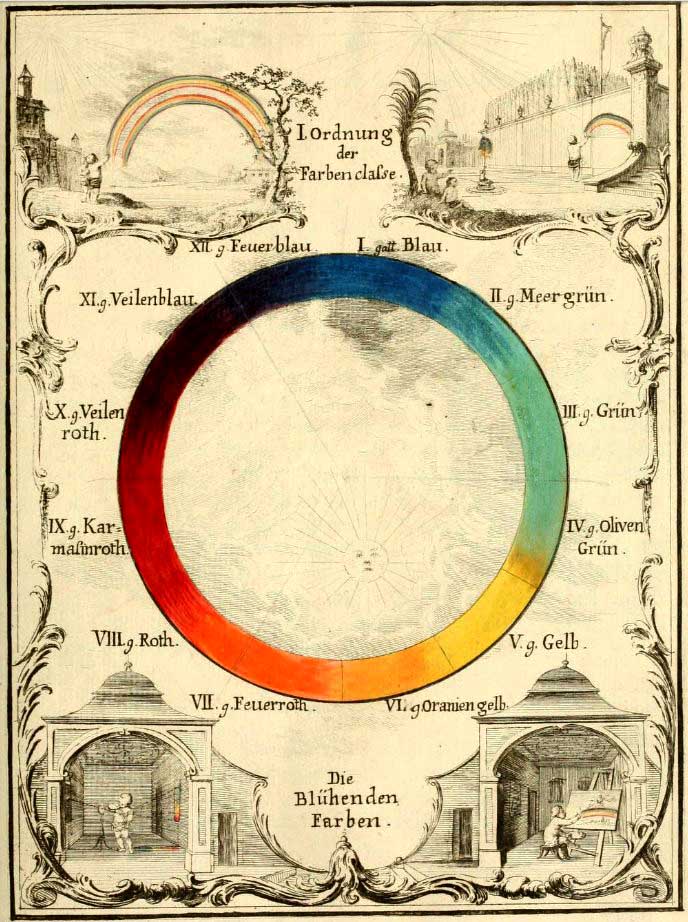
7. Modern Chromatics Color Chart
A color chart from the book “Modern chromatics : with applications to art and industry” , by Ogden Nicholas Rood (1879). Chromatics is the science of colors.
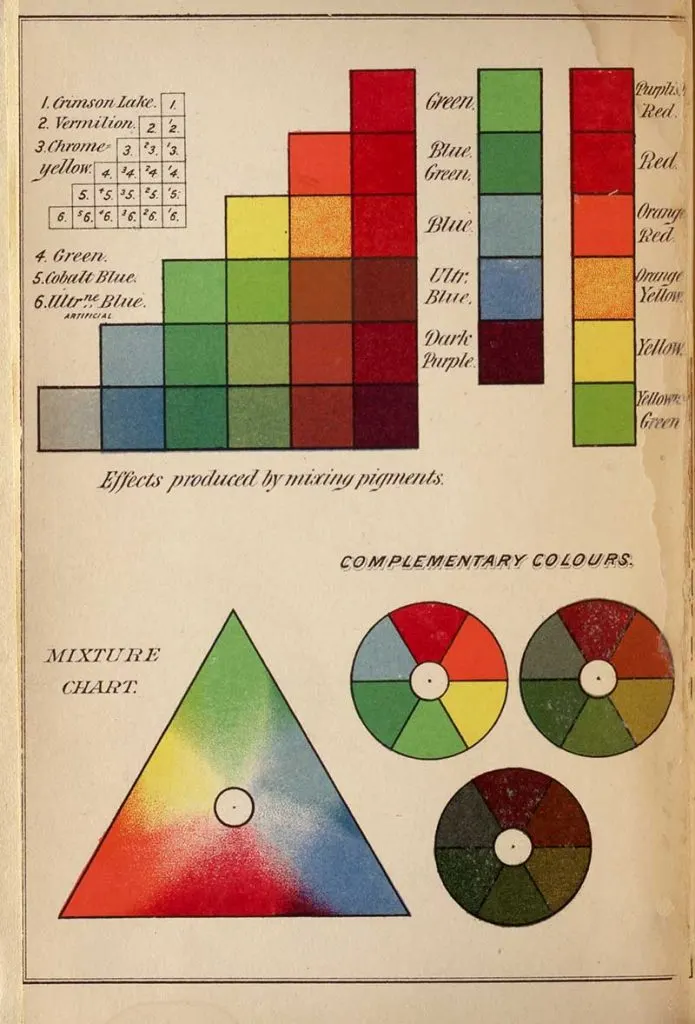
8. 1858 Vintage Color Chart
This color chart is from the book “On colour, and on the necessity for a general diffusion of taste among all classes“, by John Wilkinson.
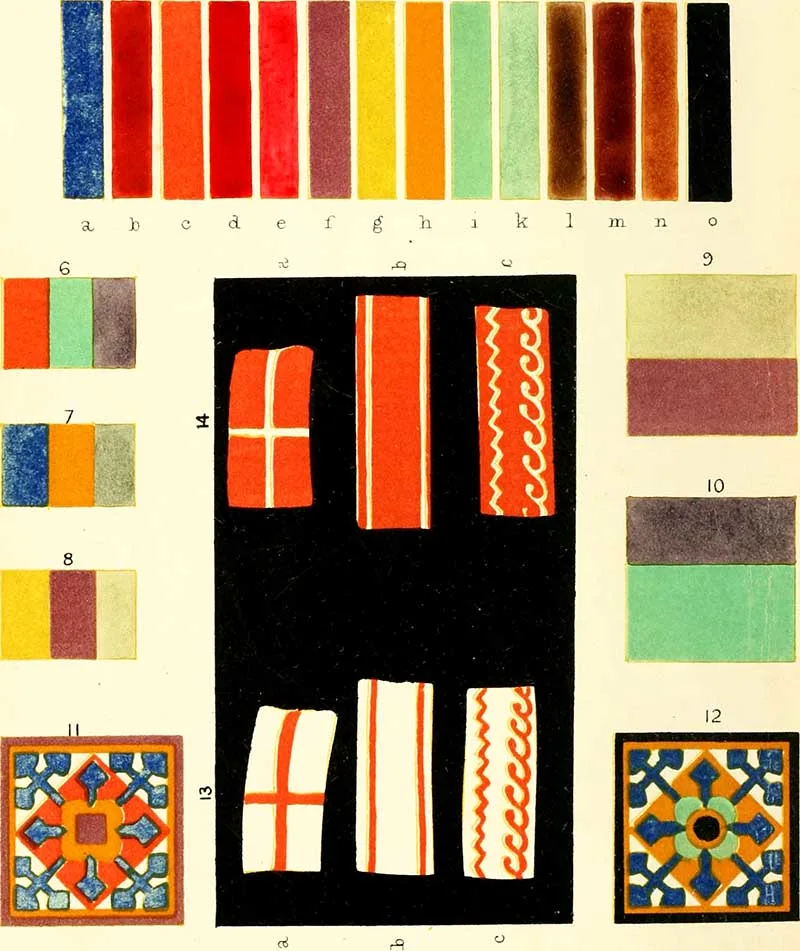
9. Russian Color Chart
This vintage poster of color wheels and charts is from the Russian Encyclopedia “Brockhaus and Efron Encyclopedic Dictionary“.
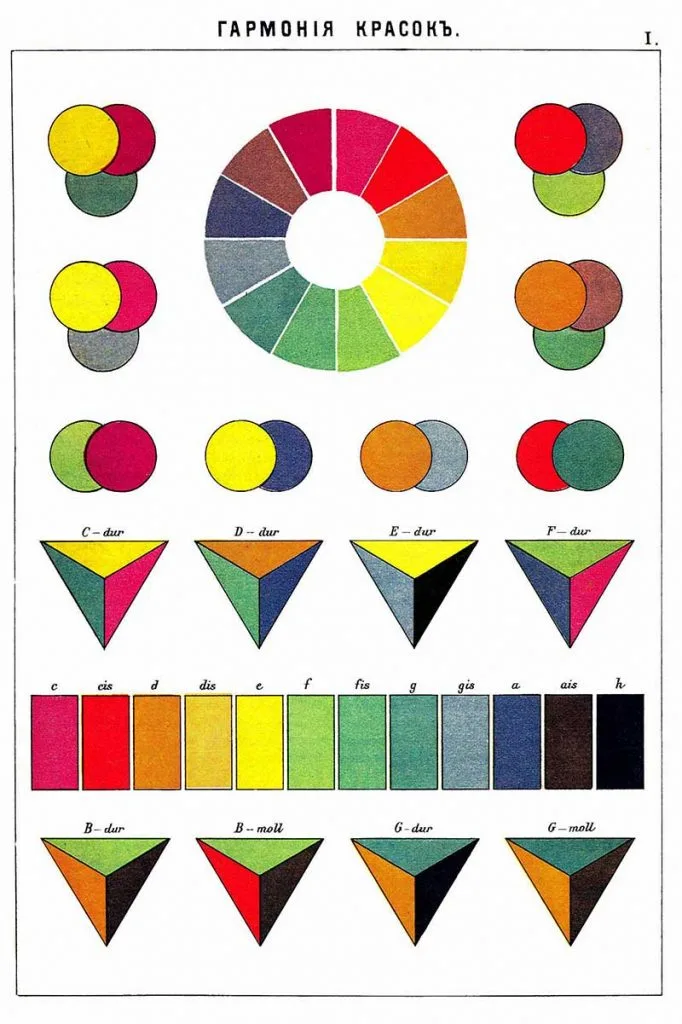
10. Cercle Chromatique
This vintage color wheel is by the French chemist Michel Eugène Chevreul.
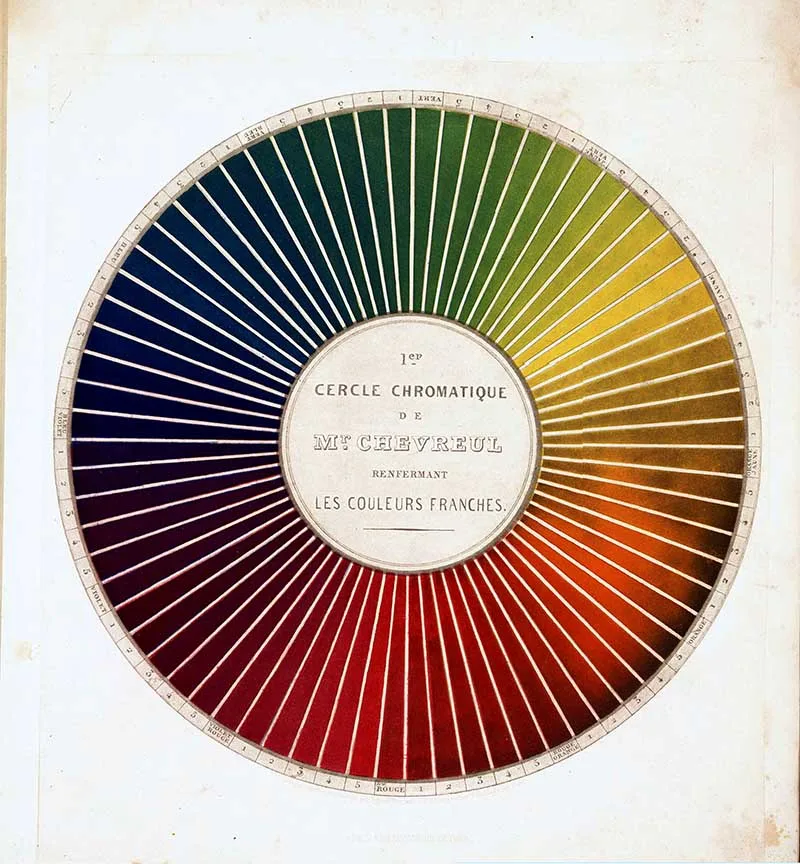
11. 1922 Vintage Color Wheel
This color chart from an German experimental psychology book “Lehrbuch der Experimentellen Psychologie“.
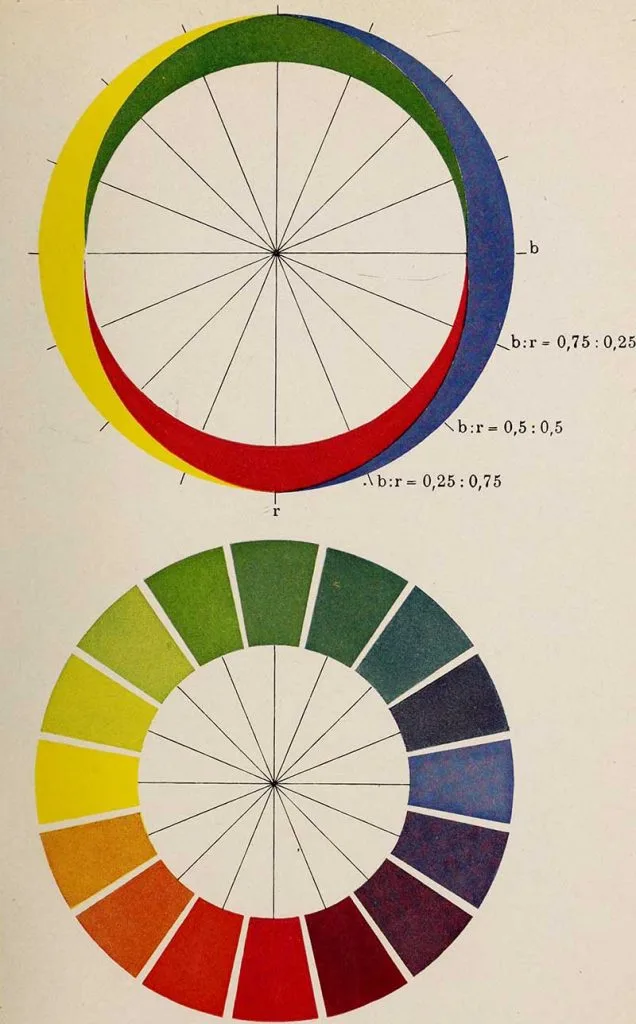
12. Philipp Otto Runge’s Color Sphere
The colors are organized in three dimensions on a sphere. Pure colors feature a large chromatic circle where green is opposed to red and yellow to purple around the equator, between the black pole and the white pole. Gray is in the center.
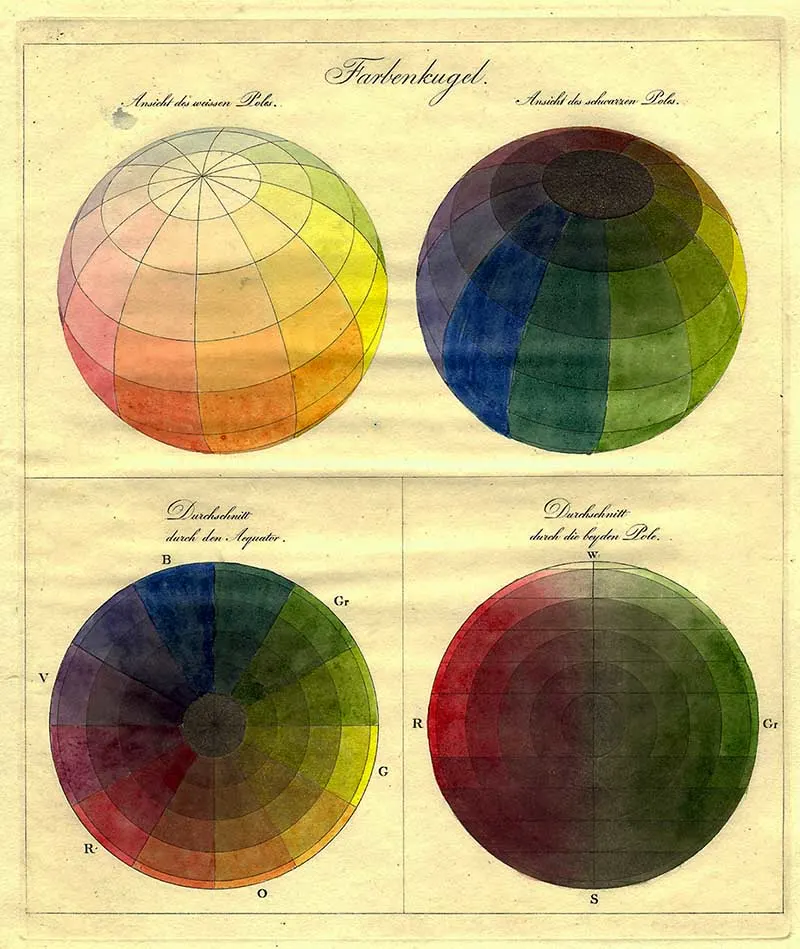
13. Sowerby’s Color Triangles
Colour blending triangles from James Sowerby’s “A New Elucidation of Colours, Original, Prismatic, and Material” (1809).
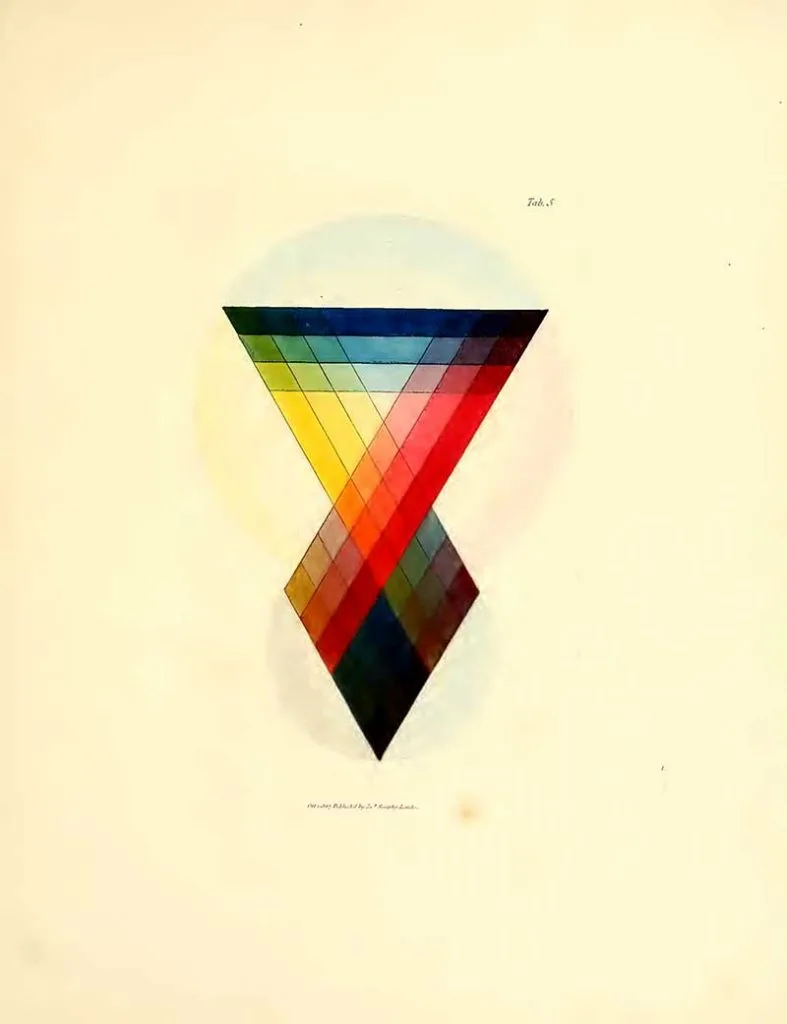
14. Parsons Spectrum Color Chart
This vintage color chart is from the book “The principles of advertising arrangement” (1912) by Frank Parsons.
Description of the Color Chart
The Color Chart, shows the three primary colors, yellow, red and blue, the same being the elements out of which every other color tone is made. Yellow and red make orange; yellow and blue make green; red and blue make violet. These three are the binary colors, so-called.
The even step between the binary and its adjacent primary is called the hue, thus the step between green and yellow is yellow-green and the one between green and blue is blue-green. These two are hues of green. In the same way, there are two hues of orange and two of violet.
Complements are shown opposite each other in the circuit. The outside circuit shows the normal colors in their full intensity. The inner circuit—the background circuit — shows half-neutral tones of the same colors each made by adding to the normal color a part of its complement.
The central tone of gray is made by using any pair of complements. Besides the Color Chart is a Value Scale of grays from black to white.
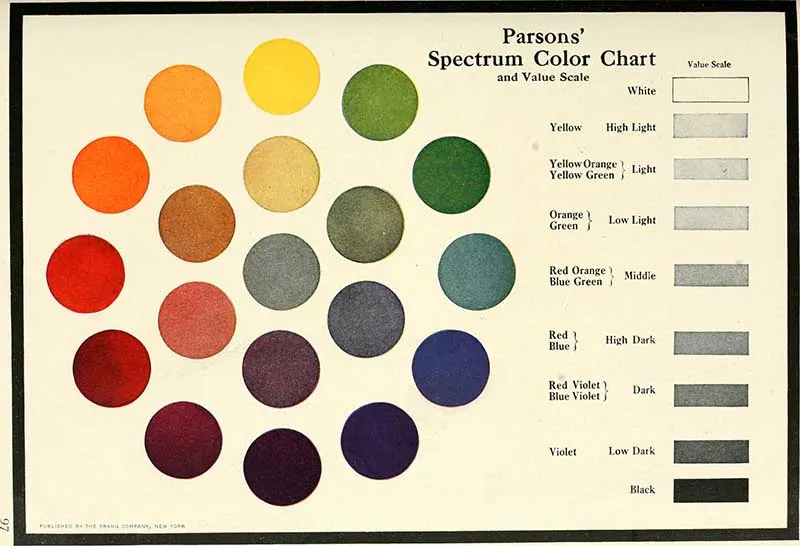
15. Atlas of the Munsell Color_System
In colorimetry, the Munsell color system is a color space that specifies colors based on three properties of color: hue (basic color), chroma (color intensity), and value (lightness). It was created by Professor Albert H. Munsell (1915).
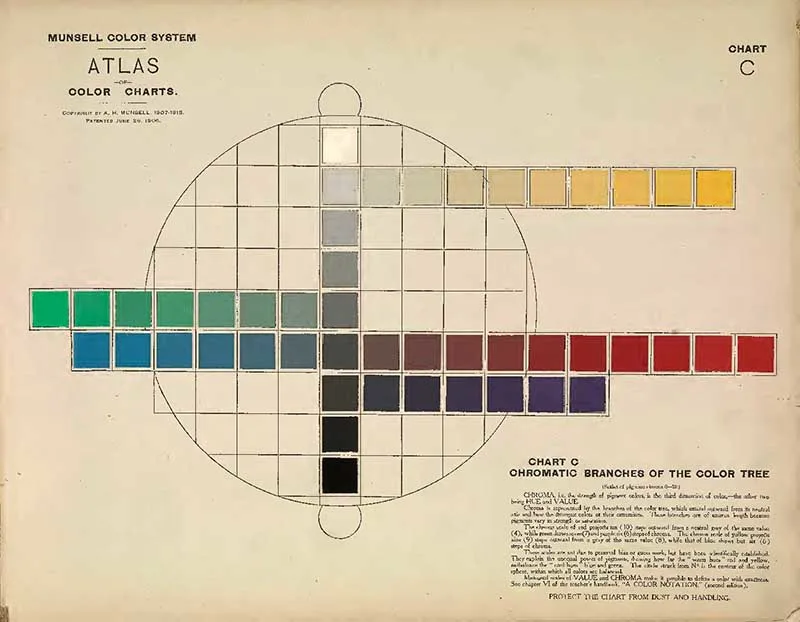
16. 1686 Vintage Color Chart
Richard Waller’s “Tabula Colorum Physiologica” (1686) is one of the earliest known color charts.
Waller created it as a tool for describing plants and animals. Collectors and scientists could compare their specimens to this table and use the names provided to identify the colors of leaves, bark, flowers, feathers, plants, and animals.
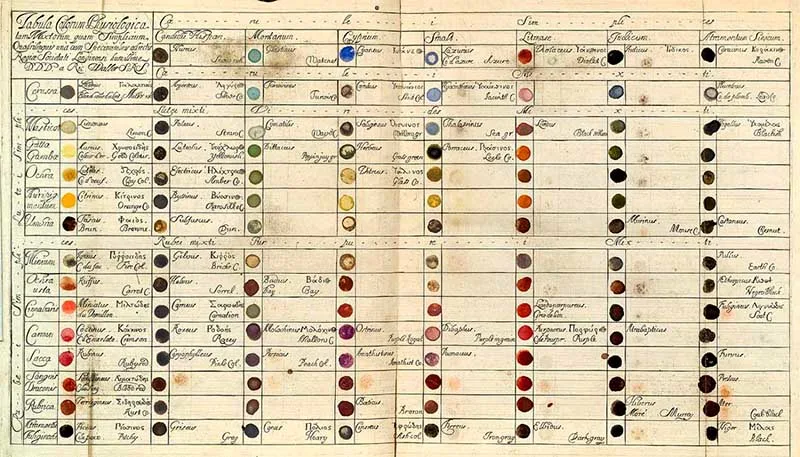
The Following Vintage Color Charts are from the Book “A nomenclature of colors for naturalists”.
“A nomenclature of colors for naturalists : and compendium of useful knowledge for ornithologists” by Robert Ridgeway 1886.
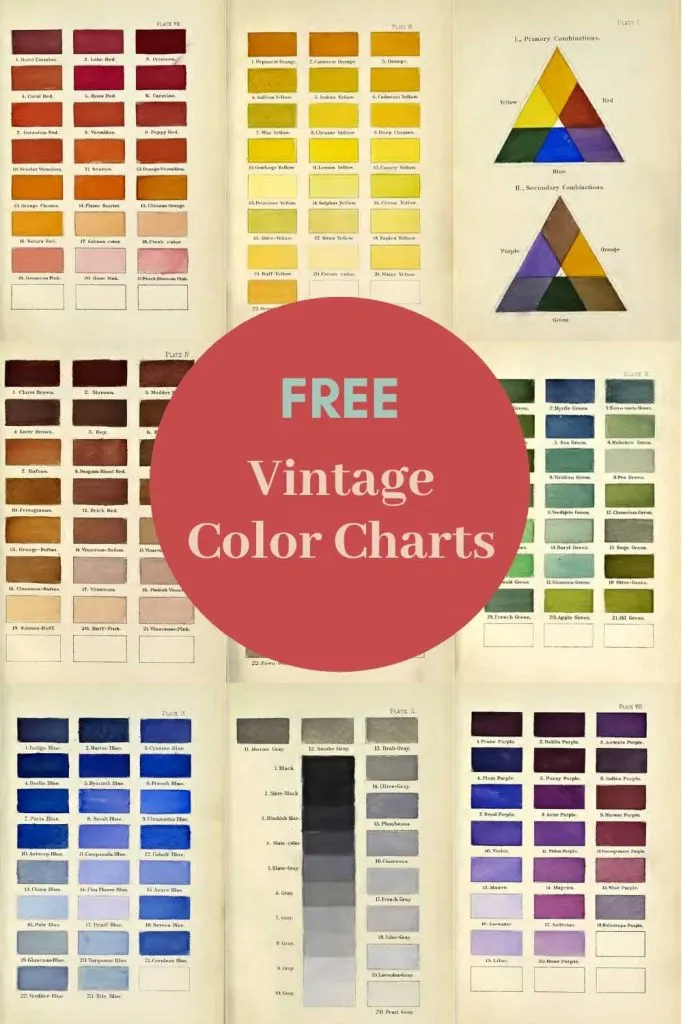
17. Primary and secondary colors in color triangles
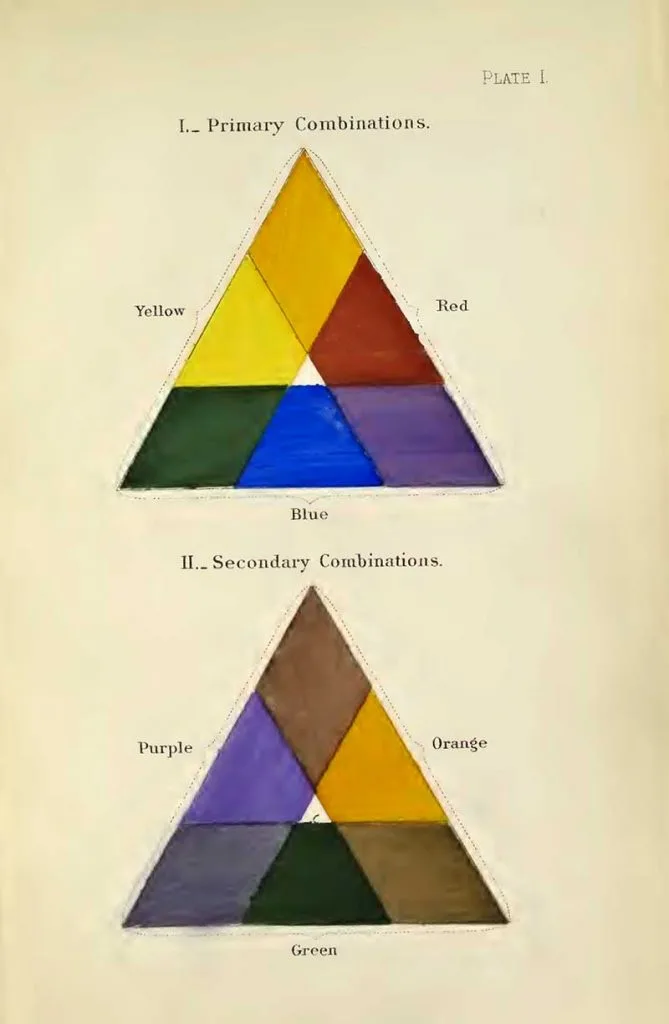
18. Vintage Color Chart – Greys
All the shades from Black to Pearl Grey.
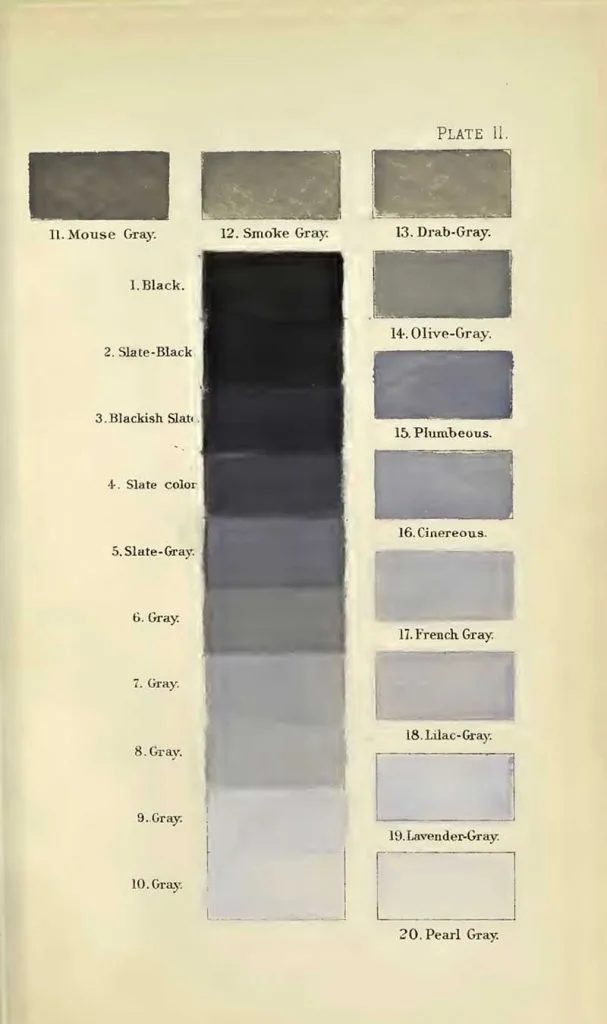
19. Vintage Color Charts Browns 1
From Seal Brown to Isabella Color.
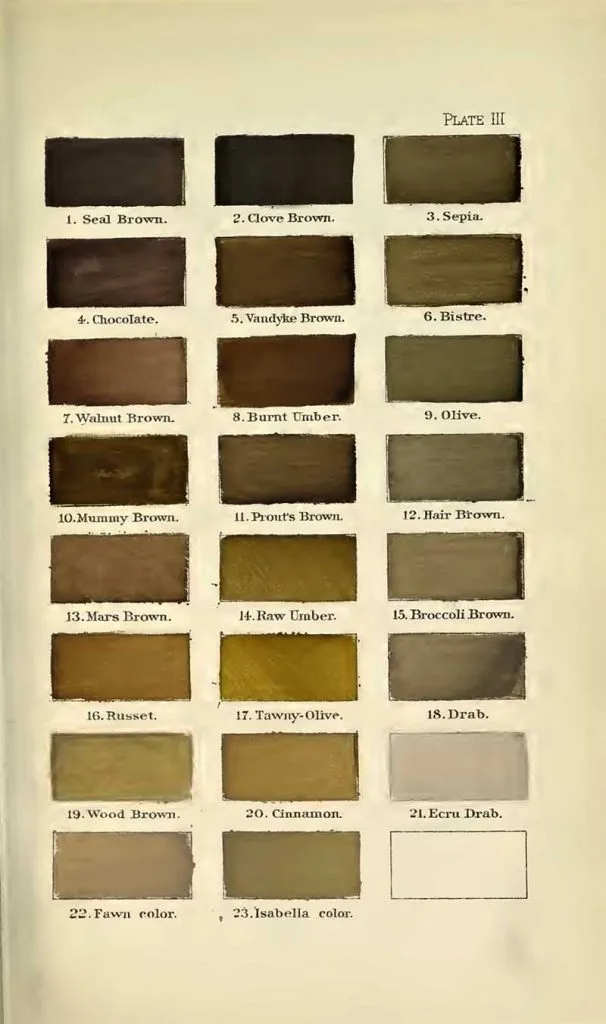
20. Vintage Color Chart Browns 2
From Claret Brown to Vinaceous Pink.
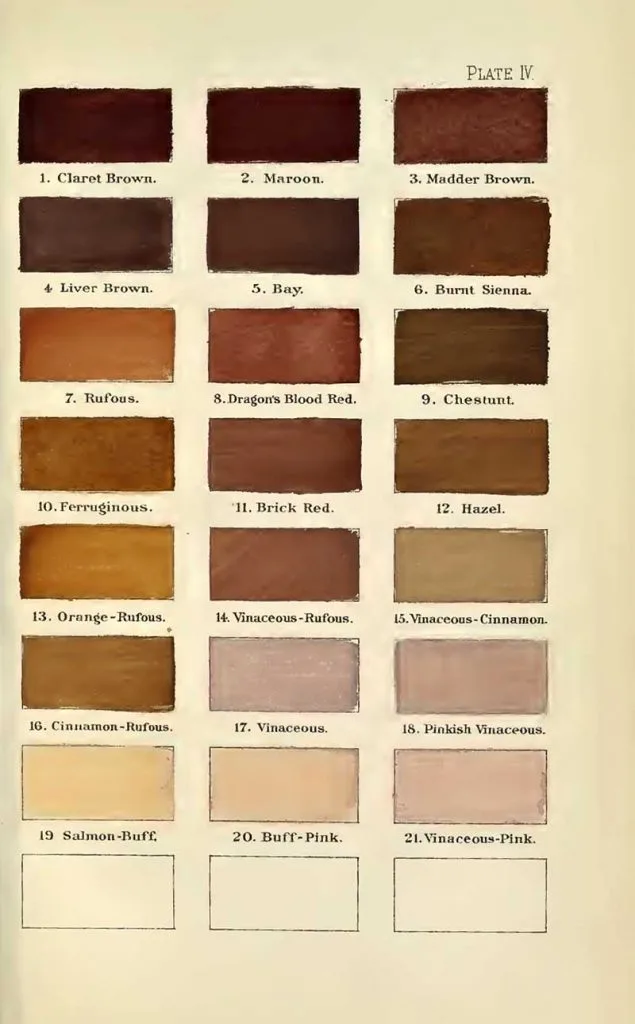
21. Vintage Colors – Blues
From my personal favorite color, Indigo Blue to Nile Blue.
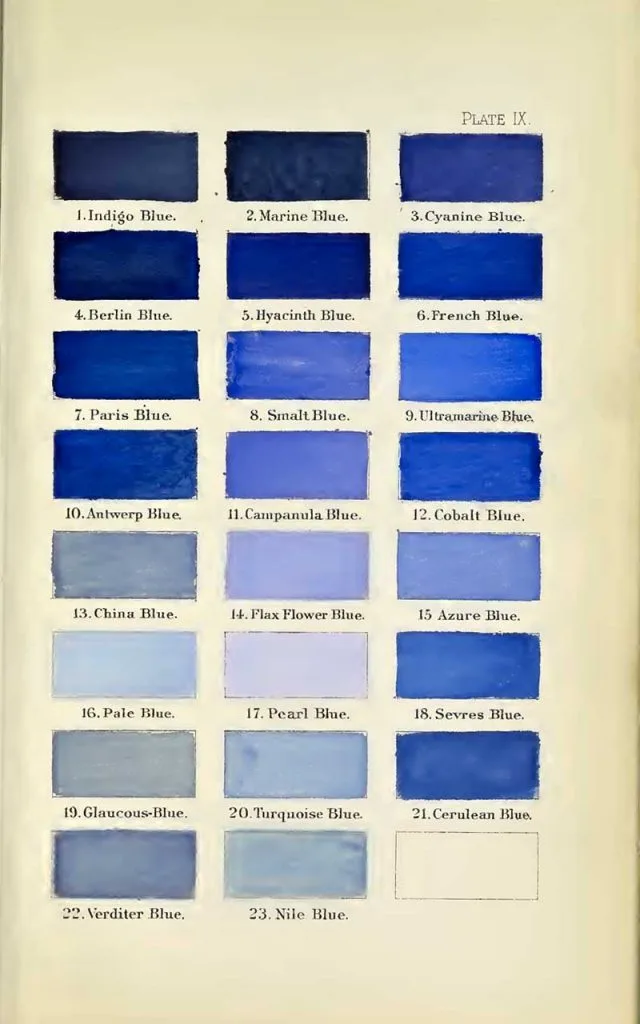
22. Vintage Colors – Greens
From Bottle Green to Oil Green.
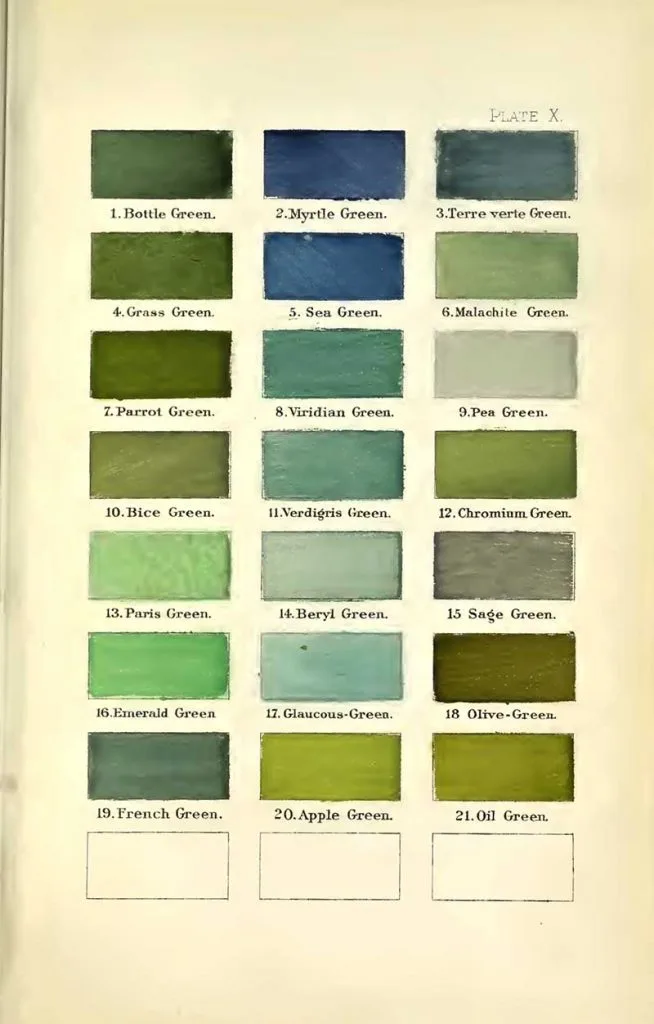
23. Vintage Color Charts – Reds
From Burnt Carmine to Peach Blossom Pink.
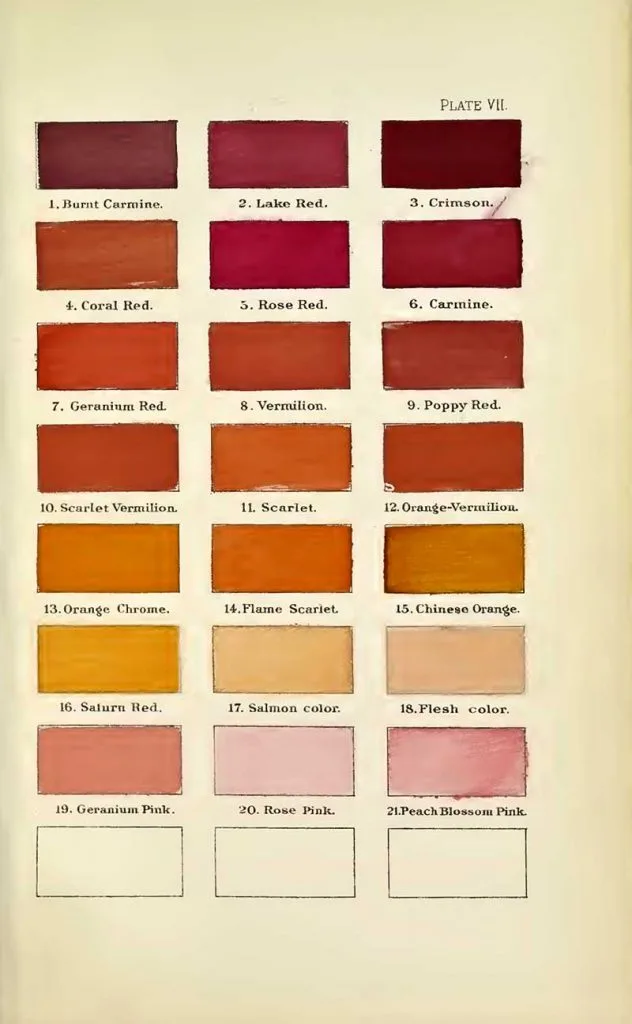
24. Vintage Color Charts – Orange
From Orpiment Orange to Orange Buff.
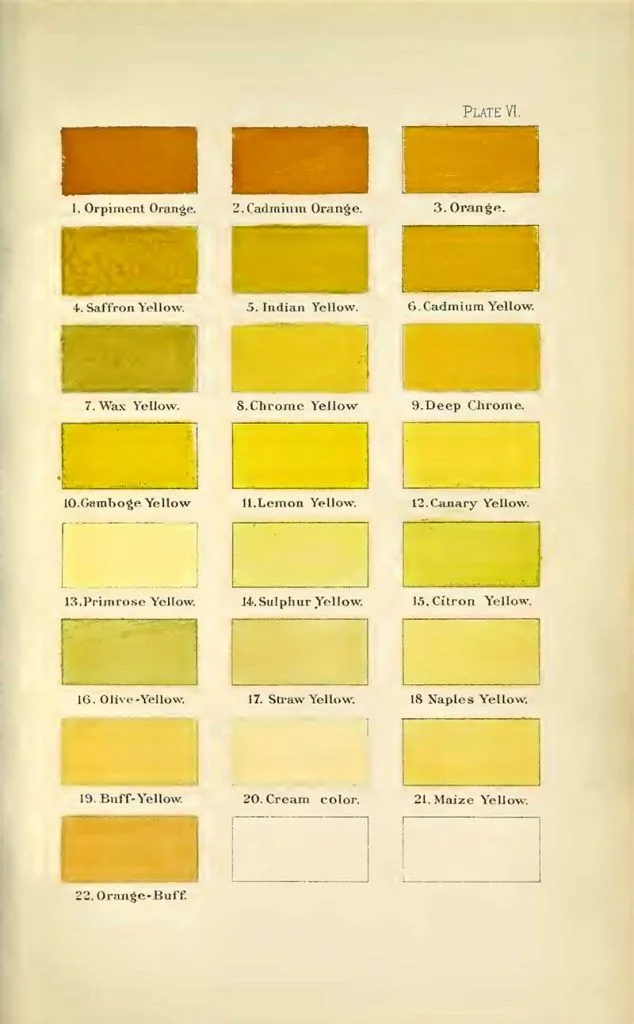
25. Vintage Color Charts – Purples
From Prune Purple to Rose Purple.
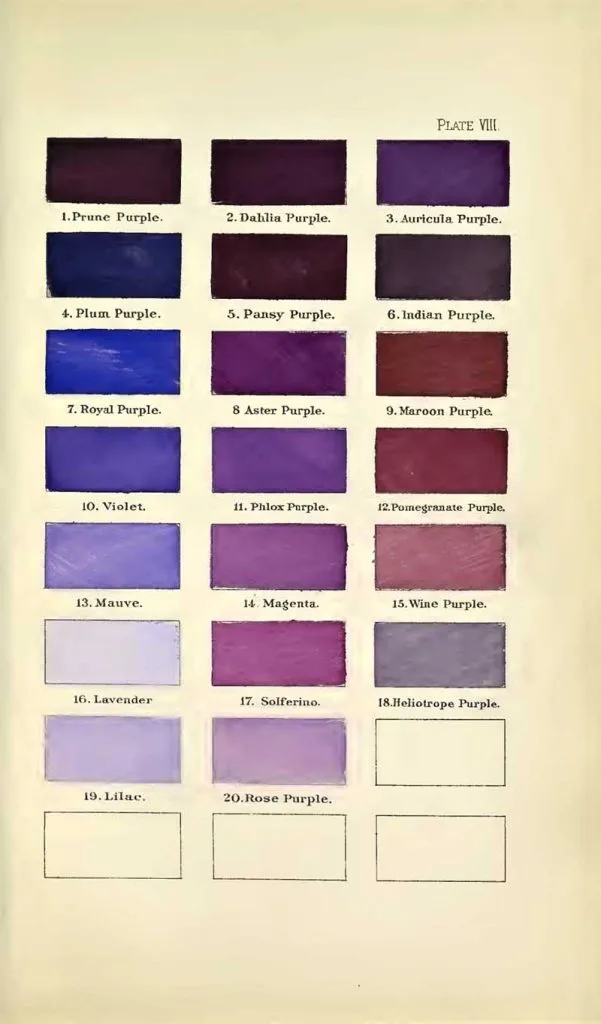
26. Vintage Color Chart – Yellow
From Tawny to Vinaecous Buff.
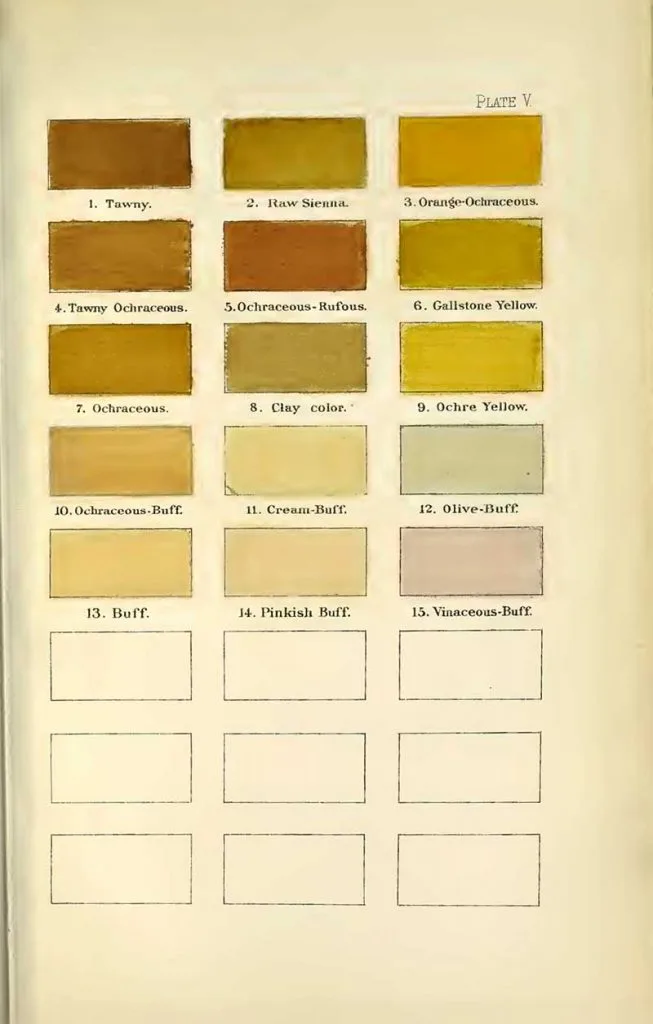
If like me, you enjoy a colorful home decor scheme, any of these vintage color wheels or vintage color charts would look fabulous framed as part of a gallery wall. Find more color and pattern charts here and check out those of Owen Jones’s Grammar of Ornament.
These color wheel posters will go with the vintage circus posters I have on my wall along with the colorful vintage hot air balloon prints and vintage Japanese travel posters.
For the best results, I send the jpg of the print I want to my local printers or one of the big print companies. There you can get the image printed on good quality paper with high-quality printing such as Giclee.
With most of these printing companies, their software will advise what would be the optimum print size for each picture. If you search for art printing services you should find a service to meet your needs.
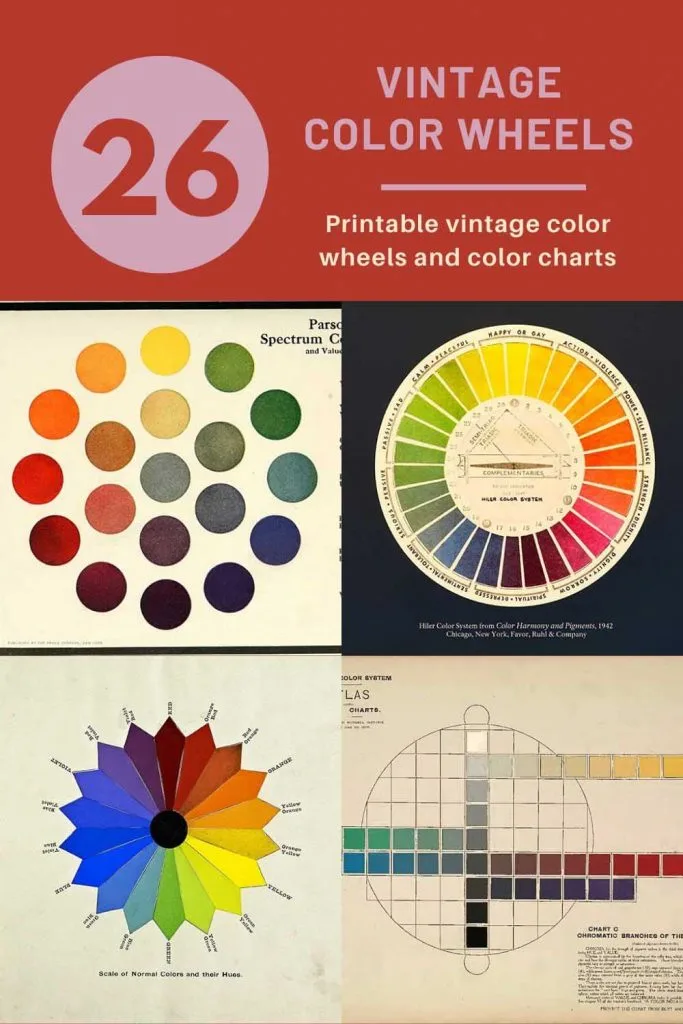
I have a collection vintage artist supply drawings and adverts from an old catalog on Pictureboxblue, which would compliment these color wheel prints.
If you enjoyed these posters then you might want to check out some of the other vintage educational charts and posters on the site.
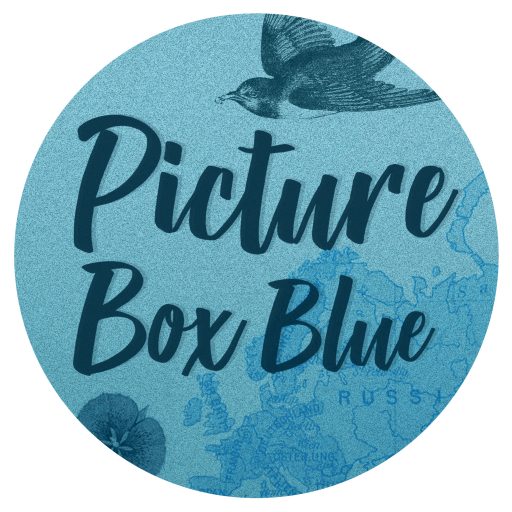
Nancy
Friday 17th of November 2023
These are wonderful! Thank you.
claire
Friday 17th of November 2023
Thank you, glad you like them.
Bert
Tuesday 15th of November 2022
Great collection for inspiration ! Well done!
claire
Tuesday 15th of November 2022
Thank you so much I'm pleased you enjoyed them.
Cheryl
Thursday 5th of November 2020
Wow this is such a great and interesting collection! I love that Goethe though Violet was “unnecessary “. I had no idea that colour wheels went back so far, or were shaped in different ways. Really appreciate this post, thank you!
claire
Thursday 5th of November 2020
Thank you so much, yes it's interesting to see the history of color wheels.
Allyson
Wednesday 13th of May 2020
Wow, I didn't know that the color chart dated to 1686! Still learning something new every single day.
claire
Thursday 14th of May 2020
I didn't know either until I started curating this collection.
Kristi
Wednesday 13th of May 2020
Color wheels have always confused me but all of the information and research you've provided is such a great resource! PINNED! Thank you!
claire
Wednesday 13th of May 2020
Thank you so much, really pleased to hear that you like the resource.